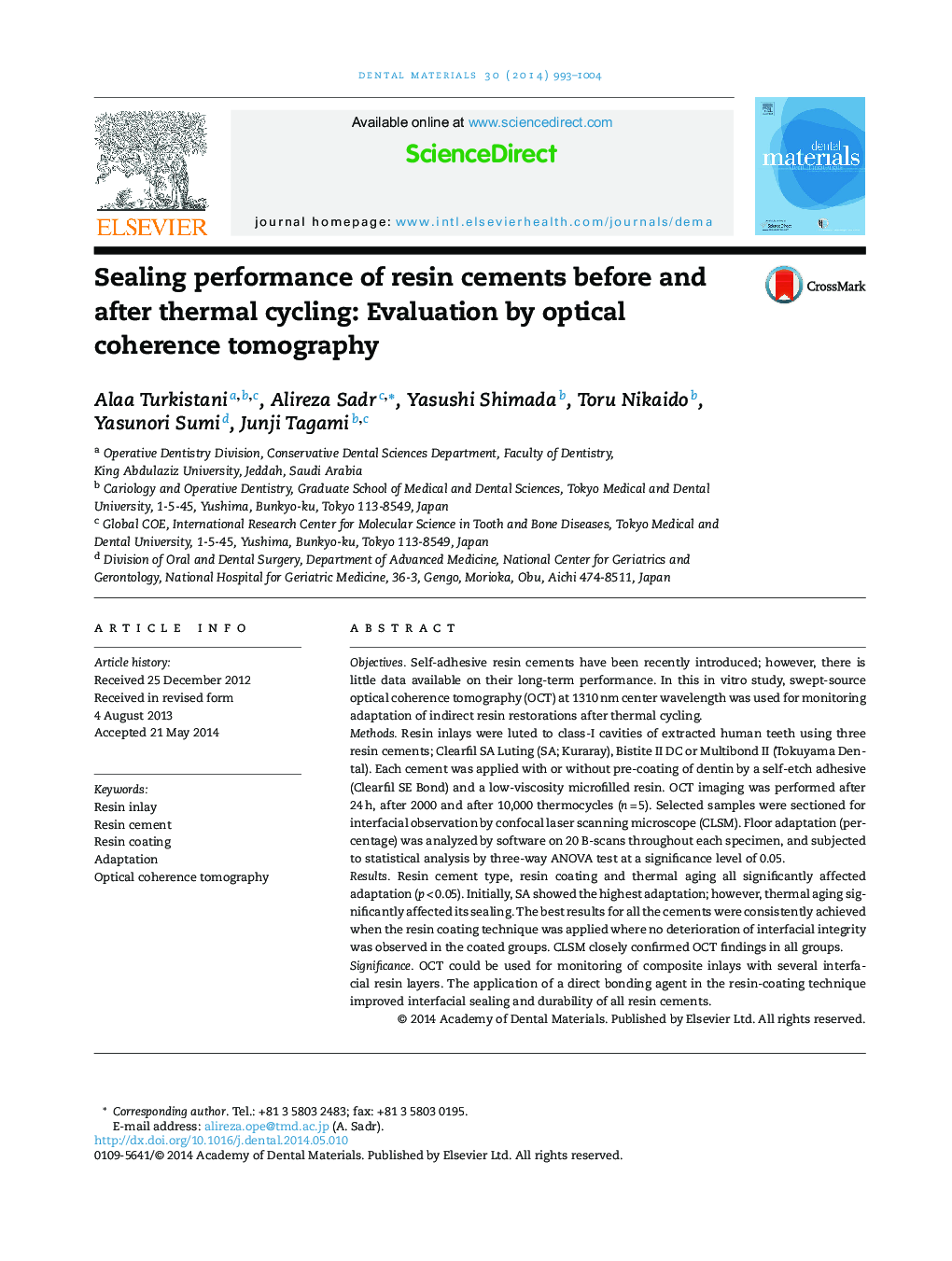| Article ID | Journal | Published Year | Pages | File Type |
|---|---|---|---|---|
| 1421098 | Dental Materials | 2014 | 12 Pages |
ObjectivesSelf-adhesive resin cements have been recently introduced; however, there is little data available on their long-term performance. In this in vitro study, swept-source optical coherence tomography (OCT) at 1310 nm center wavelength was used for monitoring adaptation of indirect resin restorations after thermal cycling.MethodsResin inlays were luted to class-I cavities of extracted human teeth using three resin cements; Clearfil SA Luting (SA; Kuraray), Bistite II DC or Multibond II (Tokuyama Dental). Each cement was applied with or without pre-coating of dentin by a self-etch adhesive (Clearfil SE Bond) and a low-viscosity microfilled resin. OCT imaging was performed after 24 h, after 2000 and after 10,000 thermocycles (n = 5). Selected samples were sectioned for interfacial observation by confocal laser scanning microscope (CLSM). Floor adaptation (percentage) was analyzed by software on 20 B-scans throughout each specimen, and subjected to statistical analysis by three-way ANOVA test at a significance level of 0.05.ResultsResin cement type, resin coating and thermal aging all significantly affected adaptation (p < 0.05). Initially, SA showed the highest adaptation; however, thermal aging significantly affected its sealing. The best results for all the cements were consistently achieved when the resin coating technique was applied where no deterioration of interfacial integrity was observed in the coated groups. CLSM closely confirmed OCT findings in all groups.SignificanceOCT could be used for monitoring of composite inlays with several interfacial resin layers. The application of a direct bonding agent in the resin-coating technique improved interfacial sealing and durability of all resin cements.
